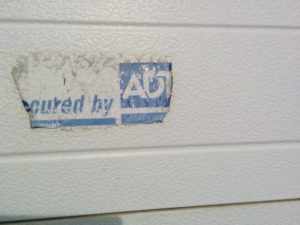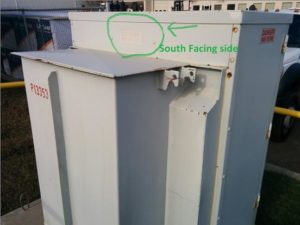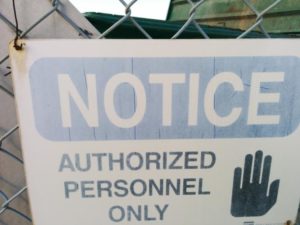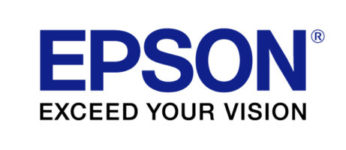Safety is one of the key reasons why labels exist. If you have a hazard or must bring awareness to a situation, a clear, easy to read safety label must be present. If you cannot read or identify the message, you will not be aware of the potential danger.
Information messages should always be clear and legible. These messages could be the instructions on starting and engaging mechanical equipment or the pathway is icy and proceed with caution.
Some messages are designed to create awareness. A security company’s name in a prominent location shows that the building or worksite has safeguards within. With a damaged label, the contact information, “in case of an emergency” may be missing; or the steps to follow to report the situation.
If your label fails, it is of no value. The label will not share its message or meaning resulting in a potentially dangerous situation for your employees, vendors and visitors.
Why Labels Fail
Labels fail for various reasons—adhesive breakdown, lack of UV protection, no topcoat or being applied on an incompatible surface or in an incompatible temperature.
- Adhesive Breakdown – Adhesives are the glue that binds the label to the surface. Adhesives vary due to temperature range, durability, surface preparation or ultra violet rays to name the most common.
- Lack of UV Protection – UV protection is required if the label is exposed to the sun’s rays.
- No Topcoat – Topcoat on a label’s surface protects the image and message from abrasion, sun’s rays and general weathering. Without a proper topcoat, fading of the message is common.
- Incompatible Surface – The best surface for label adhesion is smooth, clean and dry. If the surface cannot be optimally prepared, the label may require application to backing media which is then fastened to the surface with hardware or hangar attachments.
- Incompatible Temperature – Temperature fluctuations of the ambient air and application surface also contribute to label failure. If the compatible label and adhesive are not combined, the label will not expand and contract with the air and surface which may result
in “cracking” or “raised corners”.
Label Application Tip
Did you know most labels are pressure sensitive which means the adhesive only forms a bond when pressure is applied to marry the adhesive with the adherent? This means pressure sensitive labels must be rubbed with a cloth or squeegee after applied or they may result in label failure.
How to Prevent Label Failure
Just because a label has been applied, this does not mean the job should be considered done and forgotten about. It should be considered a best practice to monitor and review all labels on a regular schedule and replace as necessary.
If you are experiencing label failure and have questions, do not hesitate to call the industrial labeling experts at Neumann Marking Solutions at 1-800-268-7636. We can advise you on the best labels for your conditions and get you set up with the proper labeling supplies. We can print your required labels for you or point you to the right solutions on our extensive online store (Canada-wide free shipping offered).











 Help Desk Service – Contact us Between the Hours of 7:30 – 4:00 (MST)
Help Desk Service – Contact us Between the Hours of 7:30 – 4:00 (MST)